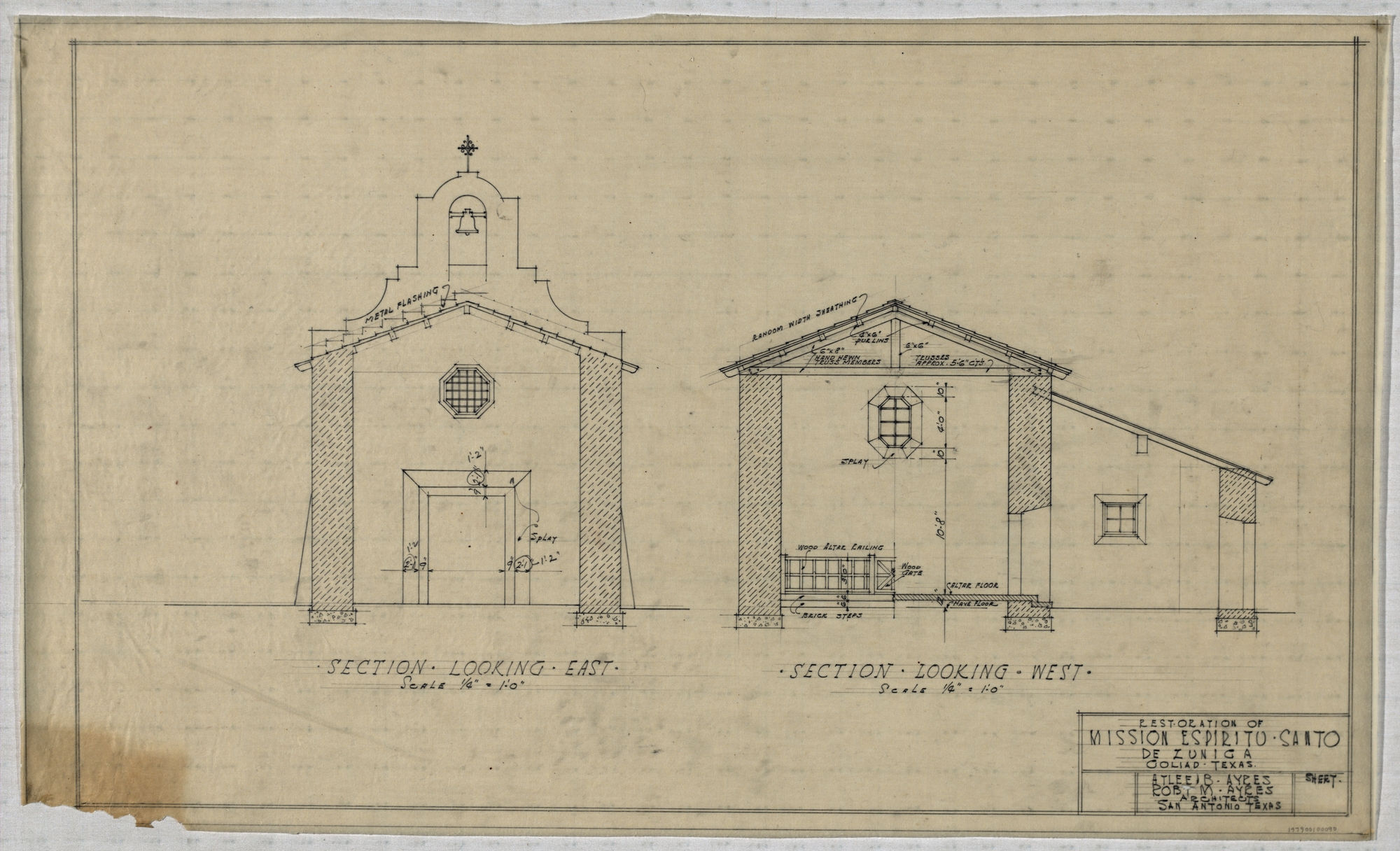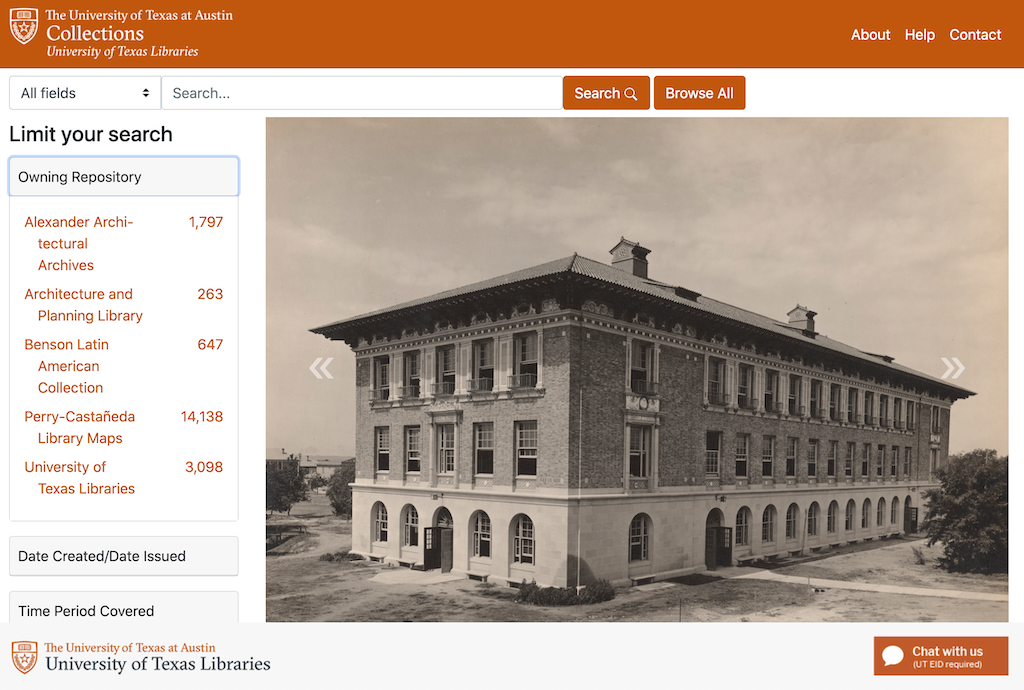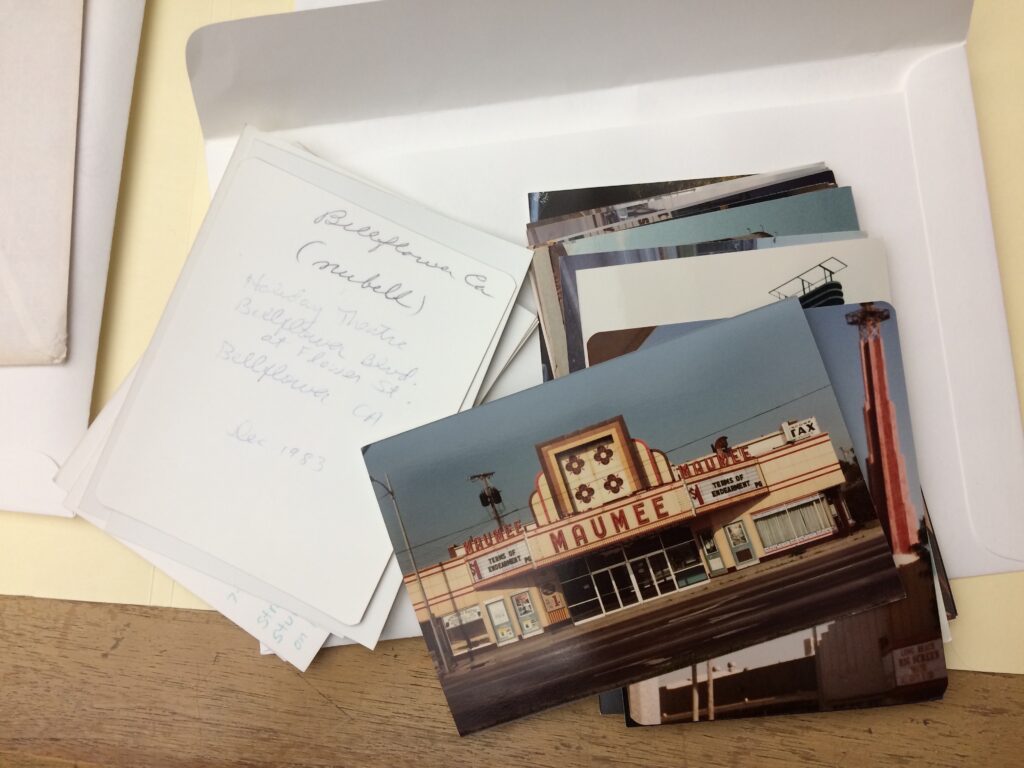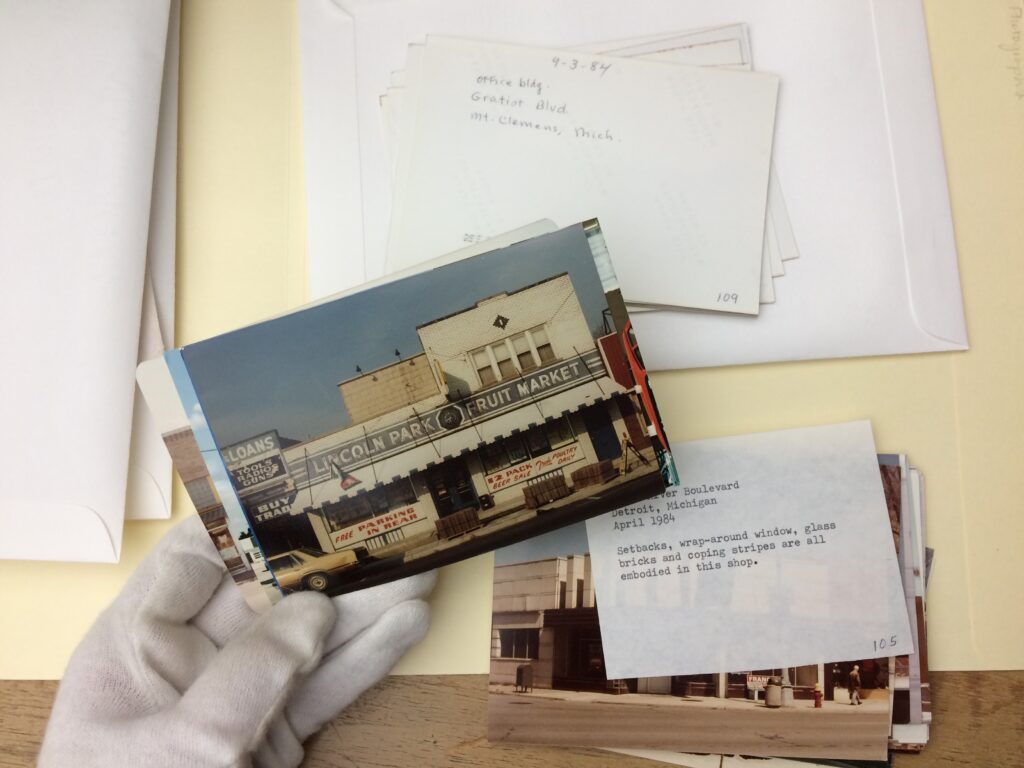What does an archivist do when the archives are closed?

Along with institutions across the globe, the Alexander Architectural Archives and Architecture and Planning Library closed our doors in March for the safety of students, staff, and visitors. Usually we spend our days surrounded by the Alexander’s collection of papers and books at Battle Hall, physically tied to the materials we work with. While we miss the stacks (and each other!), the transition to remote-work presented the perfect opportunity to focus our attention on digital projects at the archives.
Digital work gave us something to keep our hands full, but, more importantly, it gave us a way to continue to make archival resources available to researchers, also facing the challenges of remote work. Contributing to the University of Texas Libraries’ Collections Portal offered the best of both worlds. This recently launched Digital Asset Management System (DAMS) provides a platform for UT repositories to store and describe their digital materials, and share them with the public.

Luckily, this isn’t our first rodeo when it comes to digital projects at the Alexander. For as long as digital technologies have existed, the archival profession has been brainstorming ways to both preserve these technologies and take advantage of them to make archival materials more accessible. In 1999, the Alexander launched an online digital exhibit titled, Spanish Colonial Architecture as Represented in the Alexander Architectural Archive, described as “a collection of digitized drawings and photographs of eighteenth-century Spanish missions and [the] San Antonio’s Governor’s Palace. These records, dating mainly from the 1920s through the 1950s, reflect how the structures looked before various efforts of restoration and reconstruction. Selected from collections within the Alexander Architectural Archive, they include works by Harvey P. Smith, Stewart King, Ayres and Ayres, Robert Leon White, and measured drawings by UT Austin School of Architecture students in the Texas Architecture Archive”.
Twenty years later, this collection of digital scans is gaining new life on the Collections Portal. In my role as a Graduate Research Assistant at the Alexander, I’ve been immersed in a world of arches and colonnades, uploading assets from the Missions exhibit into the DAMS and adding descriptive metadata.

Following UT’s shutdown, the staff at the Alexander shifted our focus to remote projects, including working in the DAMS to ingest an array of items, from floorplans to historic photographs. With over 2,000 combined items from the Alexander Archives and Library, our collection is only growing. As researchers continue to limit travel and conduct their work remotely, access to online resources has become more important than ever. Even as UT begins to implement new safety strategies on campus and we consider plans for reopening the archive, digital portals will remain a vital access point and a way for both institutions and researchers to see archival materials in a new light. When it comes to the digital, we as archivists are in it for the long haul, rain or shine, just like our commitment to preserving traditional paper artifacts.
We look forward to welcoming you back to Battle Hall in the future, and in the meantime, we hope you’ll enjoy browsing our materials virtually via the Collections Portal.
Sources:
- Ayres and Ayres, architects (architectural firm), Mission Espíritu Santo (Goliad County, Tex.) (client). Mission Espíritu Santo de Zuniga: restoration, section. 1933. “Mission Espíritu Santo de Zuniga: restoration, section – Collections”. University of Texas Libraries Collections. <https://collections.lib.utexas.edu/catalog/utlarch:482b5b97-8213-487d-90b4-36908283d82f> (25-August-2020).
- University of Texas Libraries Collections. Accessed August 14, 2020. https://collections.lib.utexas.edu/.
- Stewart King (architect), Mission San Francisco de la Espada (San Antonio, Tex.) (client). Mission San Francisco de la Espada: patio, circulation plan, scheme 1. undated. “Mission San Francisco de la Espada: patio, circulation plan, scheme 1 – Collections”. University of Texas Libraries Collections. <https://collections.lib.utexas.edu/catalog/utlarch:894ff646-076b-46a4-b3a5-d04d322768d1> (26-August-2020).



